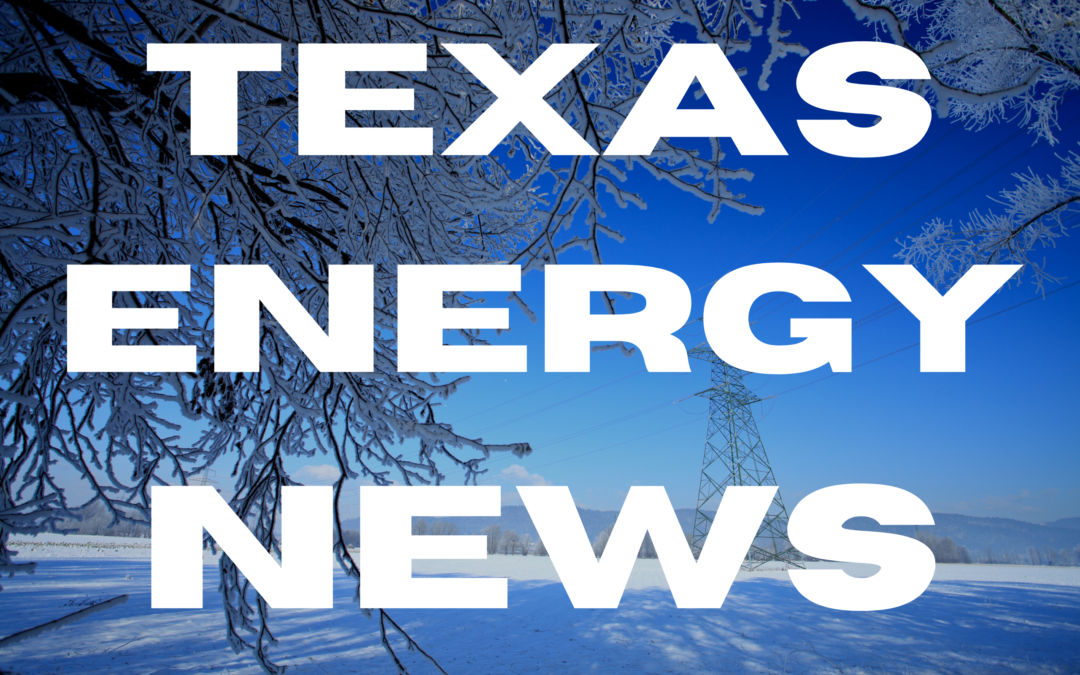The Texas Public Utility Commission will wait until 2022 to consider “Phase II” changes for the state’s electricity market.
________________________________________________
The Texas Public Utility Commission has signed off on a first batch of Winter Storm Uri energy reforms, but it will wait until 2022 to consider a second batch of more far-reaching “Phase II” changes.

The PUC is adopting changes in response to last February’s winter electricity outages.
The commission gave its approval to the first set of reforms — dubbed “Phase I” changes — on December 16. These include new legislative mandates meant to address energy market deficiencies identified during last February’s winter storm. The second set, or “Phase II” reforms, include changes meant to spur electric reliability investments and include a controversial proposal by PUC Chair Peter Lake.
Taken together, the Phase I changes and the still-under-consideration Phase II proposals represent the agency’s response so far to the winter weather emergency that led to hundreds of deaths and left 4 million without power. The outages and resulting market disruptions also cost the state’s economy more than $80 billion, according to some estimates.
The PUC staff outlined both sets of changes in a document filed at the agency under PUC Project No. 52373, which you can find here. “It has been a helluva six, seven, eight months going through what I would imagine has to be the darkest period in the commission’s history,” PUC Chair Lake said as the commissioners considered the Phase I and Phase II changes.
PHASE I CHANGES ADOPTED
The commission previously had signaled its approval for most of the market changes included on its Phase I list. On December 16, however, the commissioners gave their official OK and called upon ERCOT to report on its implementation schedule by early January. The Phase I reforms include the following:
- Lower the High System-Wide Offer cap from $9,000 per megawatt hour to $5,000, effective January 1. (The “HCAP” is the top price that generators can offer to sell their power in a key ERCOT-administered wholesale power market.)
- Raise the Minimum Contingency Level to 3,000 megawatts. (The “MCL” is the minimum amount of reserves considered necessary to avoid emergency power scarcity conditions.)
- Make changes to the Operating Reserve Demand Curve, which is an ERCOT-administered system that automatically creates price adders to wholesale energy offers. Among other things, these “ORDC” changes should ensure that market prices reach the HCAP before ERCOT appeals to the public for power conservation.
- Set higher energy efficiency program standards.
- Work to facilitate the aggregation of load resources, sometimes referred to as “virtual power plants.”
- Allow for the earlier deployment of Emergency Response Service (“ERS”), which is a service through which power consumers are paid to be willing to curtail load. Under the new rules, ERCOT can deploy ERS before an emergency alert is declared.
- Implement various Ancillary Services changes, including the implementation of a new “Fast Frequency Response” service, making changes to the existing Non-Spinning Reserve service, developing a firm fuel-based reliability service, and accelerating the implementation of a Contingency Reserve Service. (For more about Ancillary Services, see the glossary, here.)
- Compensate conventional generators and other resources that provide voltage support.
PHASE II CHANGES UNDER CONSIDERATION
Regarding the Phase II changes, Chair Lake directed agency staff to work with ERCOT staff to “identify and articulate specifications, decision points and other relevant metrics needed to develop” the following programs:
- A “Load-Side Reliability Mechanism” through which load-serving entities (also known as “LSEs,” that is retail electric providers, cooperatives and municipal utilities) would be obligated to procure commitments for sufficient capacity to serve forecasted peak-load. This is based on a proposal by Chair Lake, but so far appears to lack support from other commissioners. It also has met with push back from various stakeholders.
- A “Dispatchable Energy Credits” program through which LSEs would be required to obtain sufficient dispatchable capacity to meet net peak-load (peak-load minus renewables) during a future period. This is a based on a proposal by PUC commissioner Will McAdams, and would work in a fashion similar to the state’s current Renewable Energy Credits program.
- A “Backstop Reliability Service,” which would be an Ancillary Service to meet specific reliability needs not met by ERCOT’s real-time and Ancillary Service markets.
- Hybrid Models, which could include combinations of all other proposed Phase II mechanisms.
The commission on December 16 asked Kenan Ogelman, ERCOT’s vice president of commercial operations, to report back on the Phase II options by Feb. 15. It also directed Mr. Ogelman to give priority to the Backstop Reliability Service option because that option appears easier to implement than the others.
Commissioners McAdams, Jimmy Glotfelty and Lori Cobos stressed during the December 16 meeting that they were not specifically endorsing all of the Phase II proposals, only support for their continued review. “My bullet point disclaimer is that I don’t want to prejudge anything,” said Commissioner McAdams.


